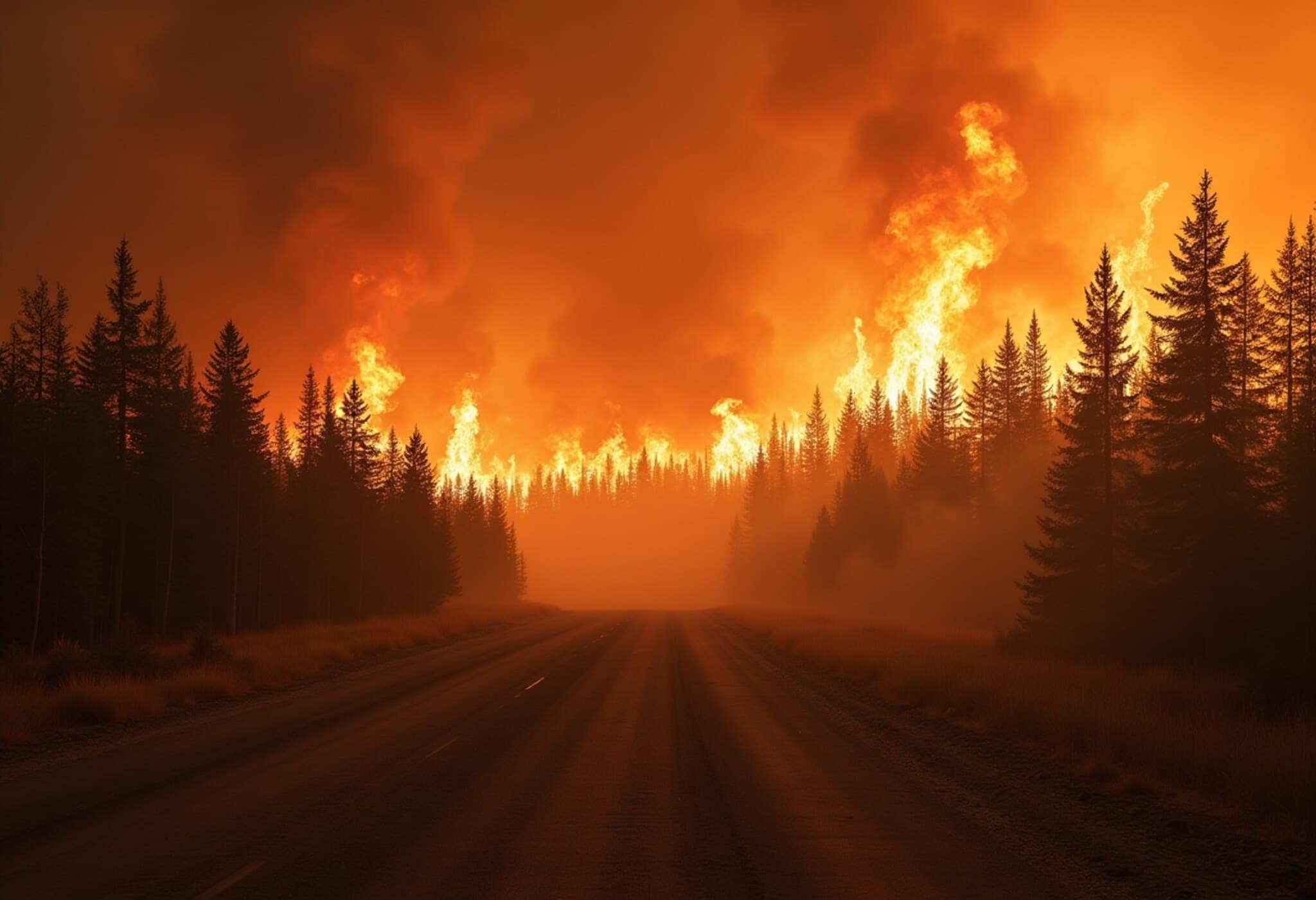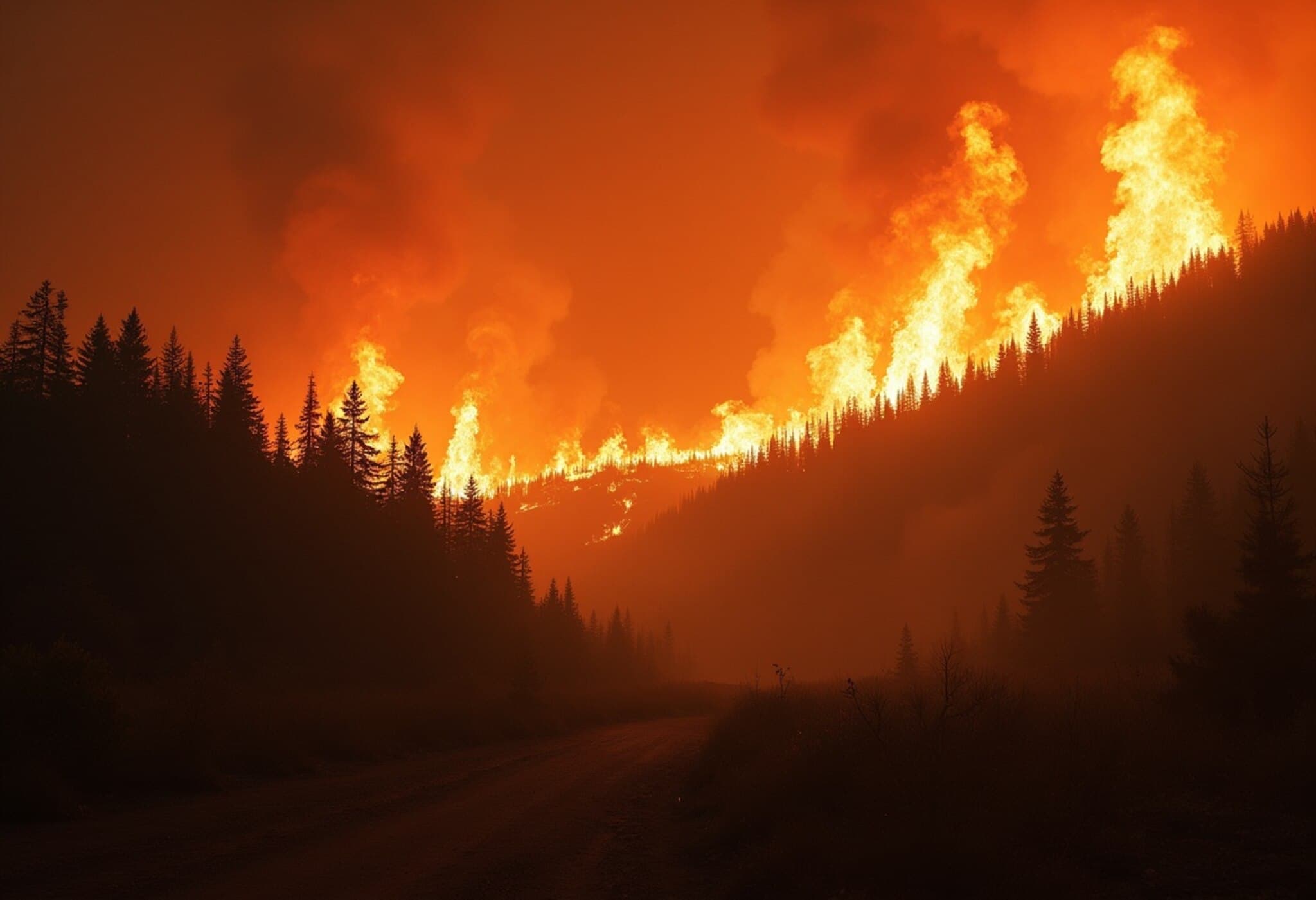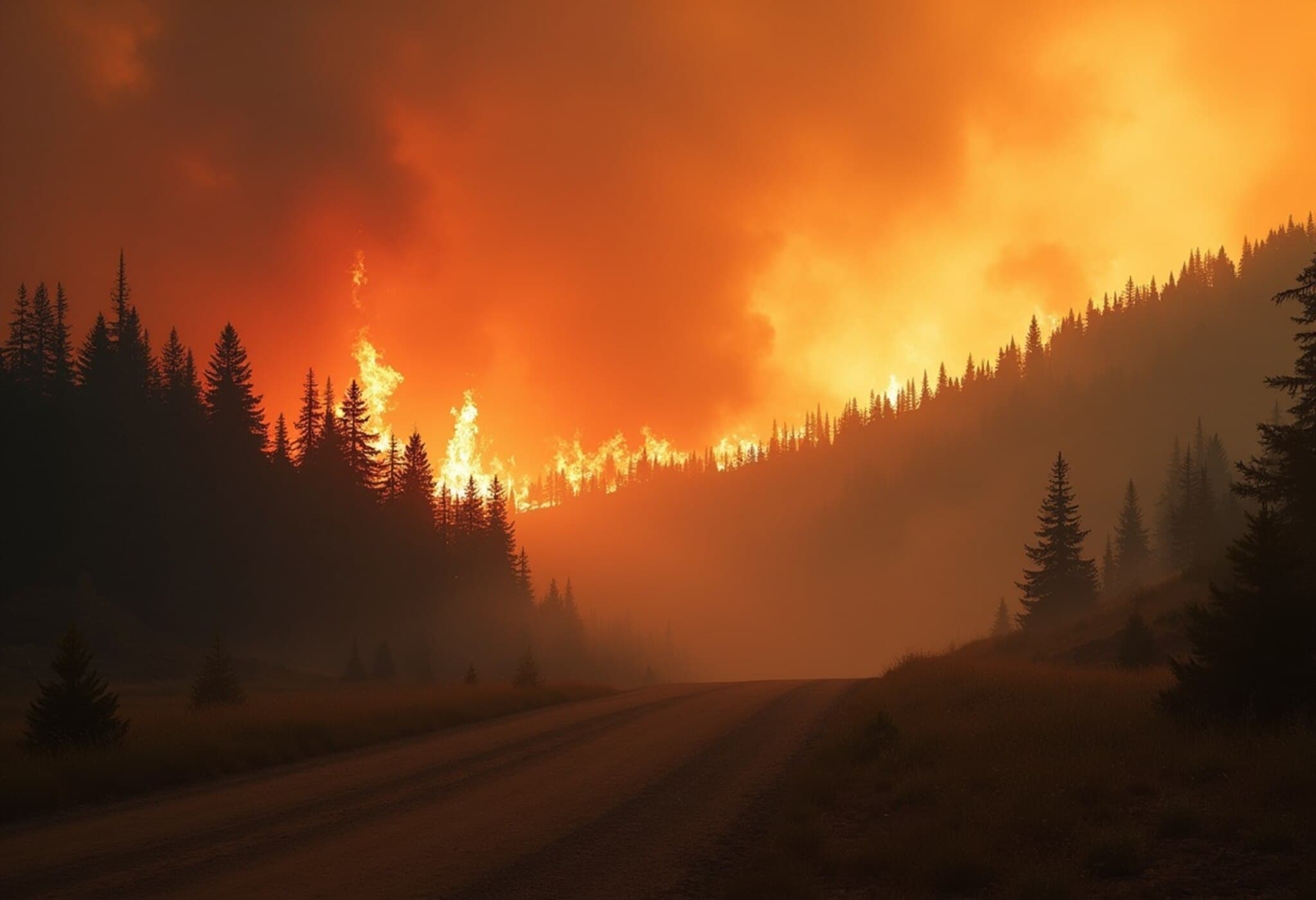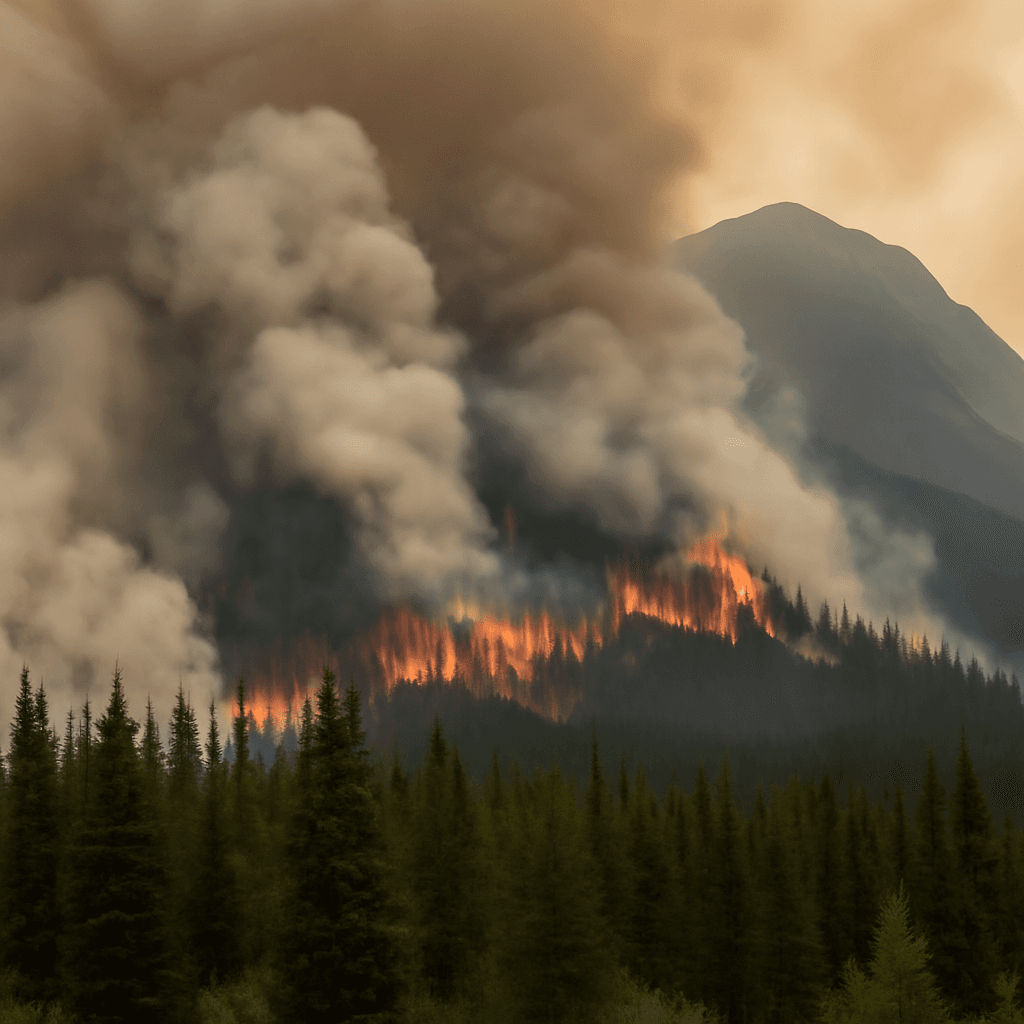Smoke from Canadian Wildfires Creates Hazardous Air Conditions in North America
Wildfires raging across Western Canada, particularly in Manitoba, have sent thick plumes of smoke drifting eastward, triggering air quality alerts in major cities such as Toronto and regions throughout the northern United States. This season, considered Manitoba’s worst wildfire outbreak in three decades, paints a stark picture of the increasing challenges North America faces amid shifting climate patterns.
Smoke Choking Cities from Toronto to the Great Lakes
On a sweltering Monday, Toronto’s skies were noticeably hazy, with the city’s air quality index plunging to levels that put it among the worst worldwide. Environment Canada promptly issued warnings urging residents to limit strenuous outdoor activities as particulate matter from the wildfires threatened public health. Similar alerts were in place across most of Ontario and in Saskatoon, Saskatchewan.
Meanwhile, across the border, states around the Great Lakes—including northern Minnesota, Wisconsin, western New York, and northern Pennsylvania—also reported significantly degraded air quality. The smoke’s reach underscores how interconnected environmental health is across national boundaries.
Understanding the Health Implications of Wildfire Smoke
Ian Hubbard, a meteorologist with Environment Canada, explained that while wildfire smoke lofted high in the atmosphere may pose limited health risks, the situation worsens when atmospheric conditions push smoke down to ground level. This elevation in particulate matter can exacerbate respiratory problems, particularly affecting vulnerable groups such as children, the elderly, and those with preexisting health conditions.
Despite the smoke’s presence, officials forecast an improvement in Toronto’s air quality by Tuesday, though above-average temperatures exceeding 30°C (86°F) may persist, increasing the risks associated with poor air quality.
Manitoba’s Wildfire Crisis: A Regional Perspective
While Canada has not yet replicated the unprecedented scale of its 2023 wildfire season, Manitoba’s current conditions are alarming. The provincial government declared a state of emergency twice already this year to mobilize resources and coordinate evacuations. Over 30,000 residents have been displaced, some removed by helicopter from remote areas under perilous conditions. Tragically, two fatalities were reported in a town northeast of Winnipeg in May.
Environmental and Political Ramifications Across Borders
The smoke crisis has subtly intensified existing tensions between Canada and the United States. Several Republican lawmakers in Wisconsin and Minnesota publicly criticized Canada, demanding accountability for what they deem as forest management failures. Congressman Tom Tiffany took to social media to call out Canada’s handling of its forests, highlighting the political friction entwined with environmental disasters.
Experts emphasize that many Canadian wildfires ignite in vast, inaccessible wilderness areas where active forest management is limited. The predominant cause tends to be natural—lightning strikes—rather than human negligence, complicating cross-border blame narratives.
Looking Ahead: Challenges and Opportunities
This wildfire episode serves as a poignant reminder of the growing threat wildfires pose to air quality and public health across North America. It highlights an urgent need for bilateral collaboration between Canada and the U.S. on wildfire monitoring, response strategies, and forest management policies tailored to evolving climate conditions.
Key Takeaways:
- Manitoba is experiencing its worst wildfire season in 30 years, causing widespread evacuations and fatalities.
- Smoke from these fires has significantly deteriorated air quality in major urban centers in Canada and the U.S.
- Environmental conditions and geography complicate wildfire management and smoke dispersion.
- Political discourse around responsibility and forest management is intensifying amid cross-border environmental impacts.
- Continued high temperatures may prolong health risks associated with poor air quality.
Editor's Note
As wildfires become an increasingly potent force affecting air quality across borders, it’s imperative to consider holistic, cooperative approaches to wildfire prevention and mitigation. The cross-border smoke haze is more than just an environmental issue—it’s a shared public health challenge that calls for joint policies, scientific exchange, and mutual accountability. How will Canada and the U.S. adapt their strategies to meet the evolving realities of wildfire seasons shaped by climate change? This ongoing story demands attention beyond immediate smoke alerts.



















